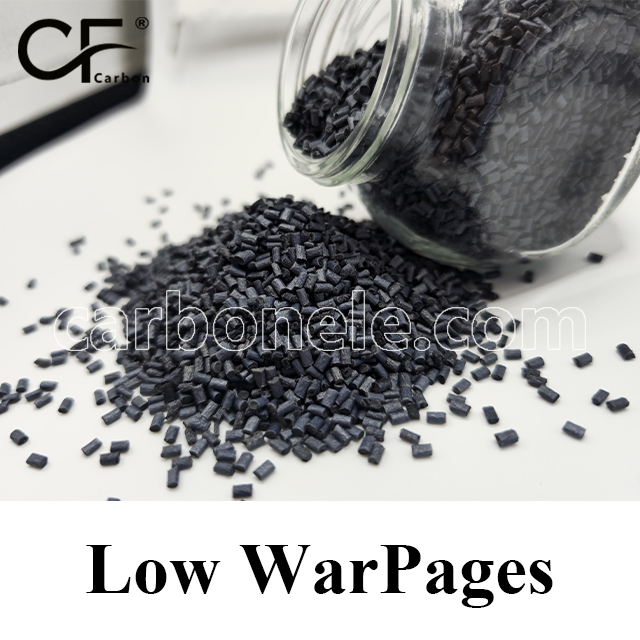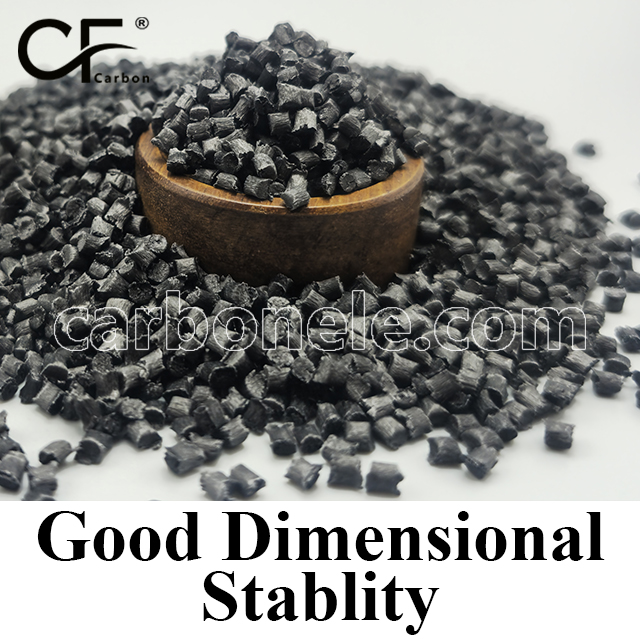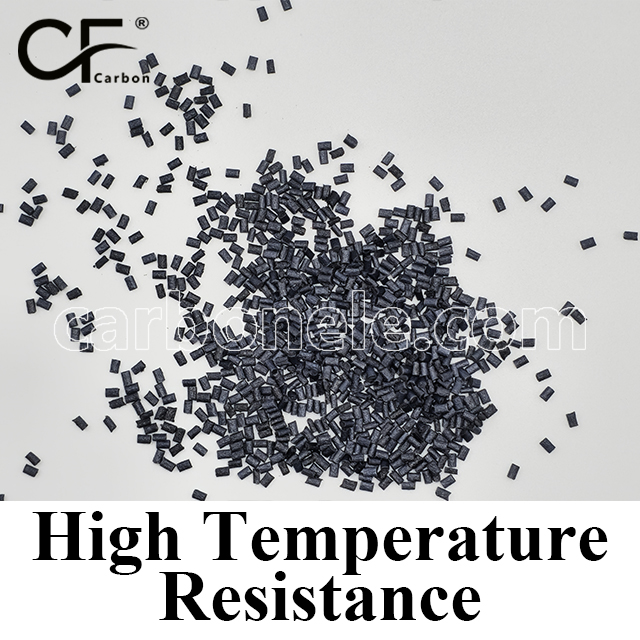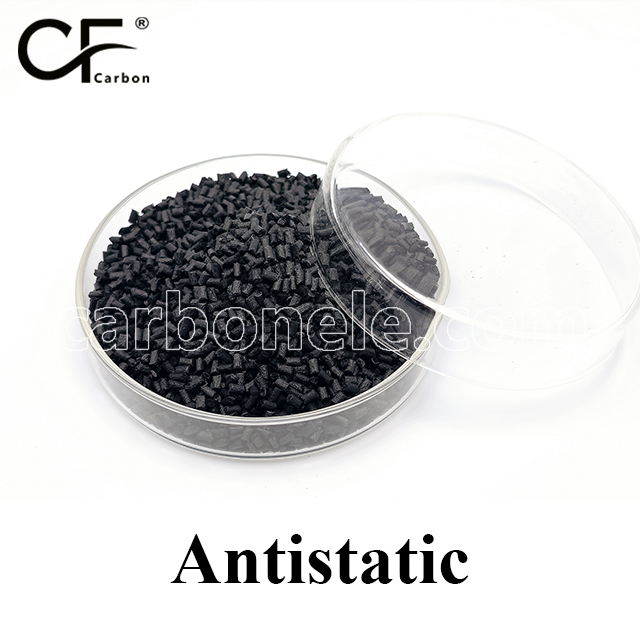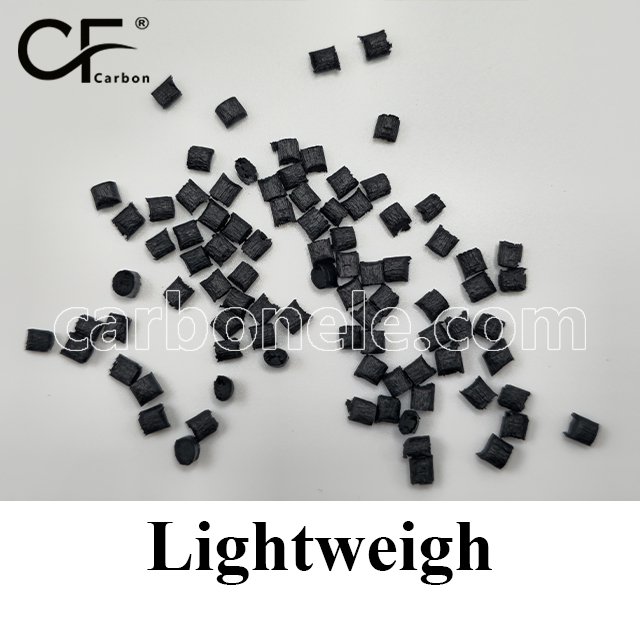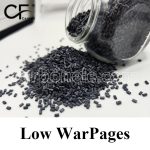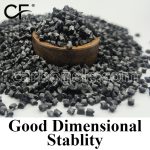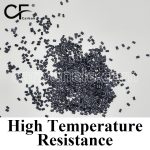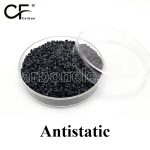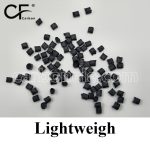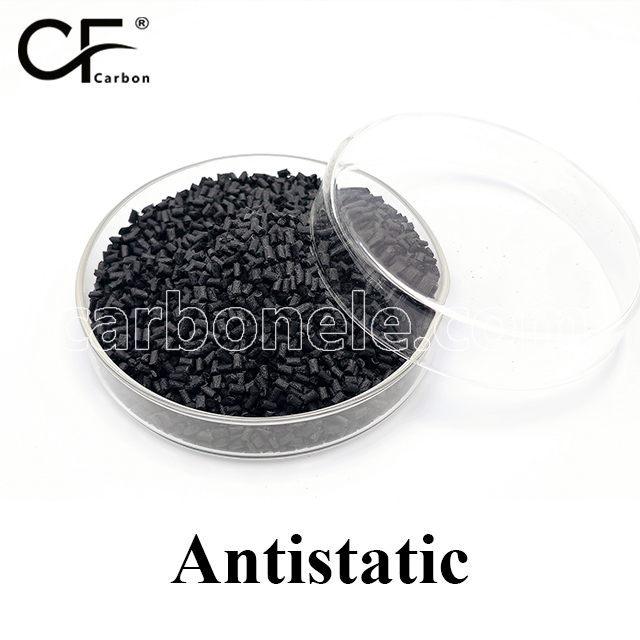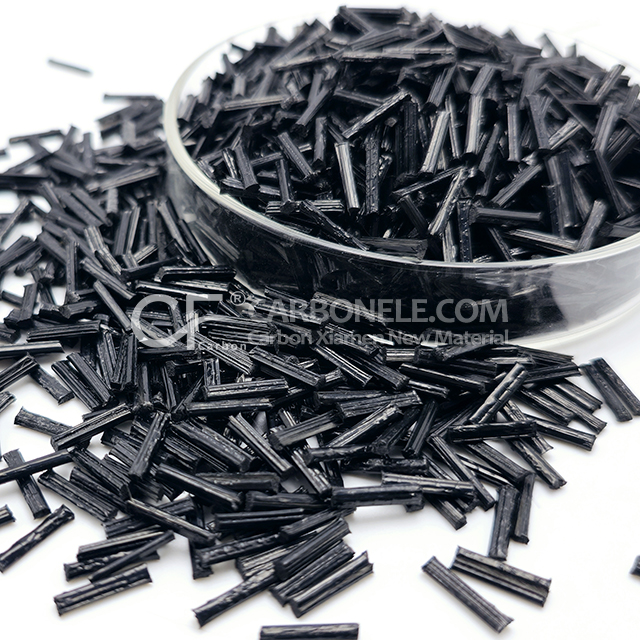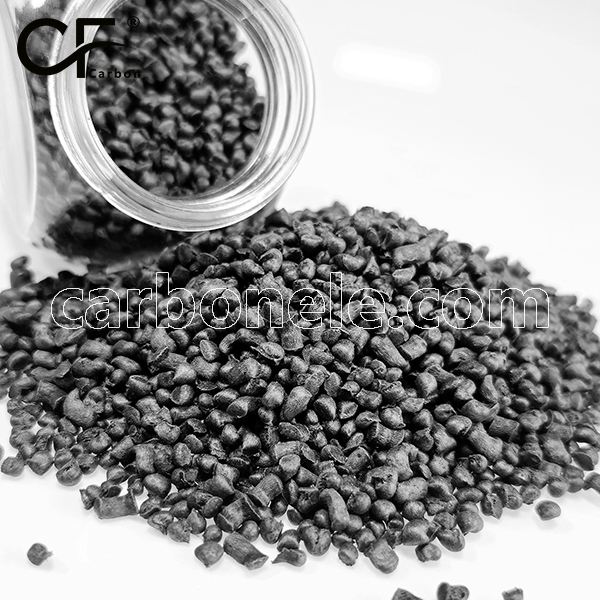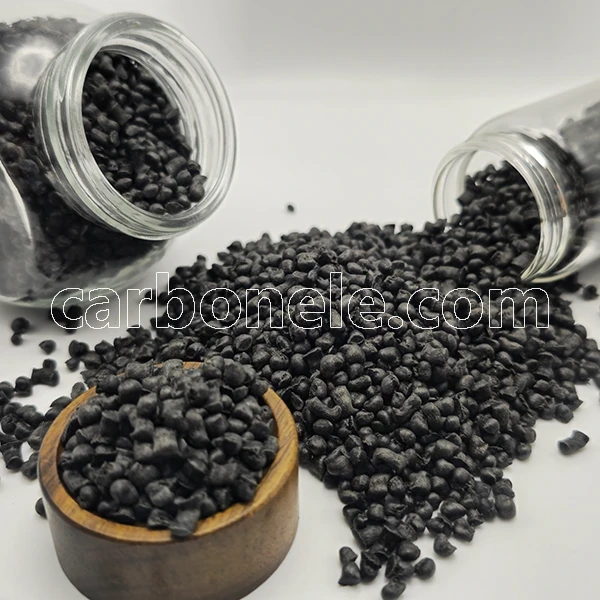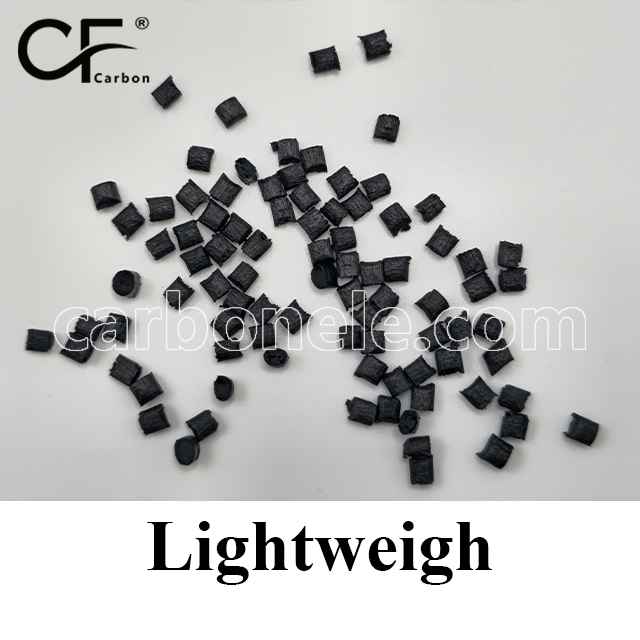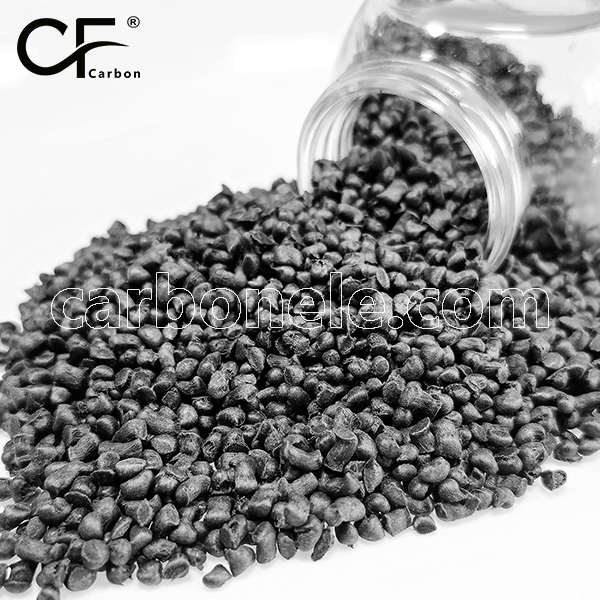TPU-CF30 is a high stiffness, fiber-reinforced thermoplastic polyurethane containing 30% short carbon fiber. It combines exceptional mechanical strength, wear resistance, and dimensional stability with retained flexibility—ideal for semi-rigid components in automotive, industrial, and robotic applications exposed to mechanical and thermal stress.

High-stiffness TPU-CF30 carbon fiber polymer
- Model number: TPU-CF-BCA3
- Matrix Resin: Thermoplastic polyurethane (TPU)
- Reinforcing Filler: Carbon fiber
- Appearance: Granules
- Grade: Injection/extrusion grade
- Packaging: 25kgs/bag
TPU-CF30 | 30% Carbon Fiber Reinforced Thermoplastic Polyurethane
TPU-CF30 is a robust, fiber reinforced thermoplastic elastomer designed for applications demanding superior structural performance with retained elastomeric flexibility. By integrating 30% short carbon fiber into a high grade Thermoplastic Polyurethane (TPU) matrix, TPU-CF30 delivers exceptional stiffness, dimensional accuracy, and strength—while preserving the shock absorption, chemical resistance, and toughness TPU is known for.
The high carbon fiber content makes TPU-CF30 especially suitable for advanced functional parts subjected to repetitive mechanical loads, thermal variation, and environmental exposure. It serves as a lightweight, semi-rigid alternative to metal and filled nylons in scenarios where both flex and form retention are required.
Key Advantages of TPU-CF30
Mechanical Strength
Carbon Fiber Content: 30% (Short carbon fiber)
Tensile Strength: ≥ 70 MPa
Elongation at Break: ≥ 70%
Shore Hardness: ~95A
→ Provides outstanding load capacity and rigidity while retaining essential elastomeric deflection under impact or stress.
Thermal Performance
Heat Deflection Temperature (HDT): ~110°C
Continuous Use Temperature: Up to 95°C
→ Withstands higher heat zones such as near engine parts or industrial actuators with minimal deformation or loss of performance.
Environmental & Chemical Resistance
Moisture Absorption: Minimal – ensures stable dimensions and reliable performance even in high humidity or submerged use
Chemical Resistance: Excellent – durable against oils, greases, fuels, and many aggressive industrial solvents
→ Maintains surface and mechanical properties under long term exposure to hostile operating environments.
Processing Characteristics
Molding Methods: Injection molding, extrusion, 3D filament extrusion
Surface Finish: Typically matte with visible fiber texture; processing influences fiber exposure
Tooling Requirements: Requires reinforced steel tooling and optimized flow channels to ensure fiber integrity and mold filling
Target Applications for TPU-CF30
Automotive
Load bearing mounts, thermal shields, rigid flex seals
→ Suitable for structural zones demanding high rigidity, fatigue strength, and chemical exposure resistance.
Industrial Equipment
Dynamic couplings, reinforced seals, semi rigid hose support frames
→ Performs under high stress and temperature, ideal for rotating, vibrating, or flexing components.
Robotics & Automation
Arm housings, actuation frames, reinforced linkages
→ Enables both rigidity and flexible mechanical function in advanced mechatronics.
Performance Gear & Consumer Products
High-durability shells, protective guards, wear plates
→ Offers next-level strength to flexibility ratio for extreme use gear and impact zones.
Performance Summary Table
| Property | Value / Description |
|---|---|
| Carbon Fiber Content | 30% (Short Carbon Fiber) |
| Tensile Strength | ≥ 70 MPa |
| Elongation at Break | ≥ 70% |
| Shore Hardness | ~95A |
| Heat Deflection Temp. | Approx. 110°C |
| Long Term Service Temp. | Up to 95°C |
| Water Absorption | Minimal – maintains precision and performance |
| Chemical Resistance | Excellent – oils, greases, fuels, solvents |
| Wear Resistance | Extremely High – excellent for long life moving parts |
| Processing Methods | Injection molding, extrusion, 3D printing |
| Surface Finish | Matte/fiber-textured – may vary by tool and orientation |
| Dimensional Stability | Very High – suited for load-bearing flexible structures |
If you want to get more information about TPU-CF30, you can vist our Youtube.
Friction coefficient of PA12-LCF
The friction coefficient of TPU is typically between 0.3 and 0.5, while TPU-CF, with added carbon fiber, lowers the friction coefficient to between 0.2 and 0.4. The smaller the value, the better the wear resistance. Therefore, TPU-CF generally offers better wear resistance than pure TPU, especially under high-load conditions.
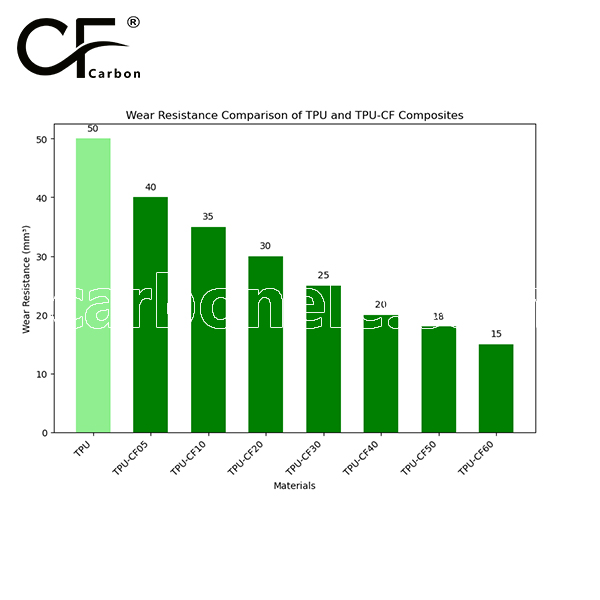
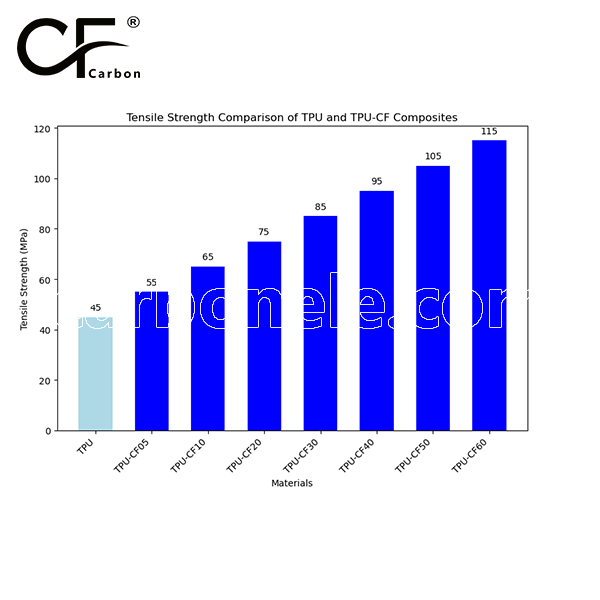

Frequently Asked Questions
Carbon (Xiamen) New Material Co., Ltd. aims to provide buyers with "one-stop" worry-free high-quality services. Here you can find all information about carbon fiber engineering plastics. If you still have questions, please send us an email for consultation!
-
How can I contact the manufacturer of a product that interests me?
When you find a product you are interested in, you can contact the manufacturer directly by sending an email and we will get back to you as soon as possible.
-
How do I find the products that interest me?
All you need to do is enter the keyword, product name in the search window and press the Enter key on your keyboard. Your search results page will then be displayed. You can also search within the product category pages on the home page. Each category is divided into subcategories, allowing you to refine your search and find products that interest you.
-
Where will I find a buying guide?
Please contact our after-sales service directly and we will provide you with a comprehensive operating guide.
-
What are CF Reinforced Thermoplastic Composites?
CF Reinforced Thermoplastic Composites are materials where carbon fibers are incorporated into a thermoplastic matrix. They combine the strength and stiffness of carbon fibers with the processability and recyclability of thermoplastics. For instance, they are used in automotive parts like bumper beams.
-
What are the benefits of CF Reinforced Thermoplastic Composites over traditional composites?
The key benefits include faster production cycles, easier recyclability, and better impact resistance. They also offer design flexibility. An example is in the manufacturing of consumer electronics casings where complex shapes can be achieved more easily.
-
How are CF Reinforced Thermoplastic Composites processed?
Common processing methods include injection molding, extrusion, and compression molding. Injection molding is widely used for mass production. For example, in the production of small components for the medical industry.
-
What industries use CF Reinforced Thermoplastic Composites?
They are utilized in aerospace, automotive, medical, and sports equipment industries. In aerospace, they can be found in interior components. In the medical field, they might be used in prosthetics.
-
How does the carbon fiber content affect the properties of the composites?
Higher carbon fiber content generally leads to increased strength and stiffness but may reduce ductility. A moderate content is often balanced for specific applications. For example, a higher content might be preferred in structural parts of a race car.
-
What are the challenges in using CF Reinforced Thermoplastic Composites?
Challenges include higher material costs, complex processing equipment requirements, and ensuring uniform fiber dispersion. Issues with adhesion between the fibers and the matrix can also arise. An example is in achieving consistent quality in large-scale production.







